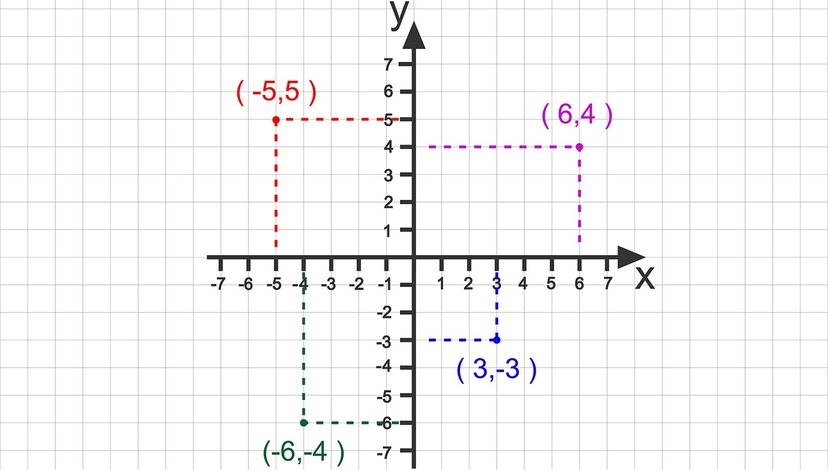
A coordinate plane is a mathematical, two-dimensional plane formed by two number lines. A horizontal number line and a vertical number line intersect to form two axes (plural for axis), and a grid system comprised of four quadrants.
Advertisement

A coordinate plane is a mathematical, two-dimensional plane formed by two number lines. A horizontal number line and a vertical number line intersect to form two axes (plural for axis), and a grid system comprised of four quadrants.
Advertisement
Two number lines — one vertical and one horizontal — form the two-dimensional grid of a coordinate plane. These two axes intersect at a perpendicular angle (meaning it's 90 degrees), which forms four quadrants that create a space to locate points and graph values.
Advertisement
The central intersection, or origin point, of the coordinate plane lies at (0,0). The horizontal x-axis and the vertical y-axis provide a map for plotting points. Points lie on the lines or fall within one of four quadrants labeled with Roman numerals.
Quadrant I values are all positive numbers. Using a clockface as an illustration, the first quadrant of a coordinate plane lies between 12 and 3 o'clock. A plot point in this quadrant must have a positive x-coordinate to the right of the origin point (0,0) or a y-coordinate above the intersection.
Advertisement
Continuing counterclockwise, the second quadrant is between 12 and 9 o'clock. This quadrant requires a negative x-coordinate and a positive y-coordinate, moving left and up from the coordinate axes origin.
The third quadrant lies between 9 and 6 o'clock, or the bottom-left of the two-dimensional plane formed by number lines. Since this quadrant is comprised of a negative x-coordinate and a negative x-coordinate, plot points will fall below and to the left of the origin. All quadrant III values are negative numbers.
The final and fourth quadrant is comprised of values with a positive x-coordinate and a negative y-coordinate. This combination of positive and negative numbers falls below and to the right of the origin.
Advertisement
If you ever played the popular board game Battleship, you're familiar with the basic concept of a Cartesian coordinate system. This important geometry concept was developed by French mathematician René Descartes in the 17th century.
In the Cartesian coordinate system, coordinates are comprised of two numbers in an ordered pair that denotes where they land from where the axes meet at one point, called the origin. The first number is on the horizontal x-axis, while the second number is on the y-axis.
Advertisement
Please copy/paste the following text to properly cite this HowStuffWorks.com article:
Advertisement